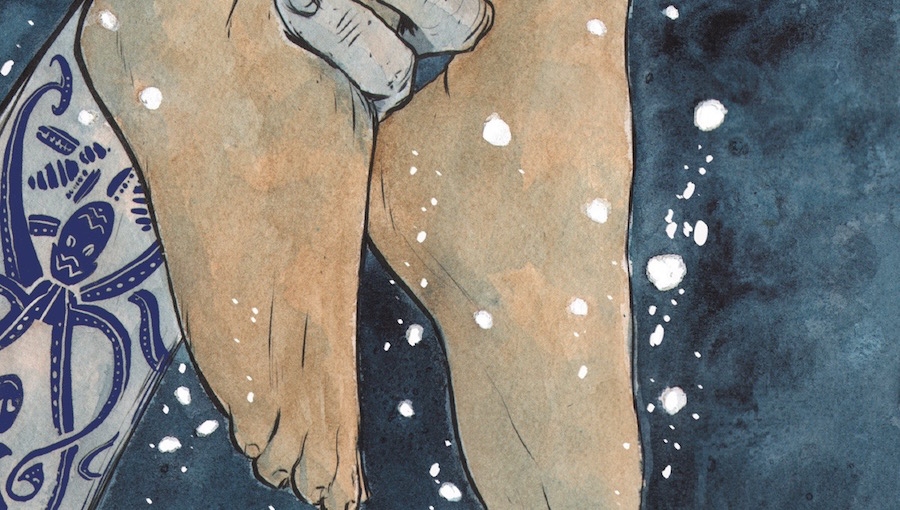The final issue of a series reads fast, too fast. You want to live in it, soak it up, let it linger in you as long as you can, because there won’t be anymore. Dept.H has been a powerfully built, surreal, and intimate roller coaster ride, and the final issue boldly sticks to that. It would have been easy for Matt Kindt to adhere to classic genre constructs and spectacle, as this is essentially a sci-fi murder mystery, but he has something else on his mind. The murder mystery, while being the engine that drives the story, was also a doorway to tell a story about an estranged woman, Mia – estranged from her father, estranged from her passion, estranged from herself. By wanting to solve the murder of her father, she was really wanting to solve the mystery of what she was missing, what was no longer working and why. This was therapy by way of extreme danger and heightened circumstances.
Mia and her journey have been a part of my life for two years now, and looking at the whole of it – her story – her struggle, while personal, has also been universal. We all compare ourselves to our parents, we all search for who we are apart from them, we all feel like no matter what we do we’ll never be able to remove the worst parts of who they were from ourselves. The disillusionment of Mia and her father: As Mia sinks deeper and deeper into her memories with him, the psychological journey mirrors Mia’s descent into the abyss of the ocean. It also very much mirrors the abyss we find ourselves in after the death of a loved one, or at the end of a relationship; you try to put the pieces together, try to find the meaning of everything. You become lost in grief and memories. Everything becomes a puzzle. In these regards, Dept.H has been truly brilliant.
In his “last issue goodbye” statement, Kindt thanks everyone that worked with him, sending huge kudos to his wife Sharlene Kindt for providing colors on this…as he freaking should. Her work reminded me of the best cinematographers in film history: Sven Nykvist, Vittorio Storaro, Vilmos Zsigmon, and many more. She’s not just worried about a panel looking good (which every panel does), but about representing an emotion, telling the story. One specific instance I remember is when Mia is having words with her brother, and the emergency lights spill across their faces. There’s this intimate nature to the conversation, but it’s also stacked with heightened underlying emotions and a sense of foreboding that pays off in the end.
Speaking of, in the end, we’re left with a calming sense of loss, a repose, the stillness that is left after the turmoil of losing someone begins to pass. You look around, and you appreciate the moment. Whatever it was that you learned, you now have to figure out how to put it to use. Knowledge is only worthwhile if you’re wise enough to use it. Mia’s solution to her dilemma comes from an unexpected and surprisingly emotional place. In the end, we’re left with an unclear answer; we can make a guess, but that’s all we can do in life: make the best guess we can and continue on. I have faith in Mia, and I’ll have faith in this creative team wherever they decide to go next.
Creative Team: Matt Kindt (story, art), Sharlene Kindt (colors), Daniel Chabon (editor)
Publisher: Dark Horse Comics
Click here to purchase.

